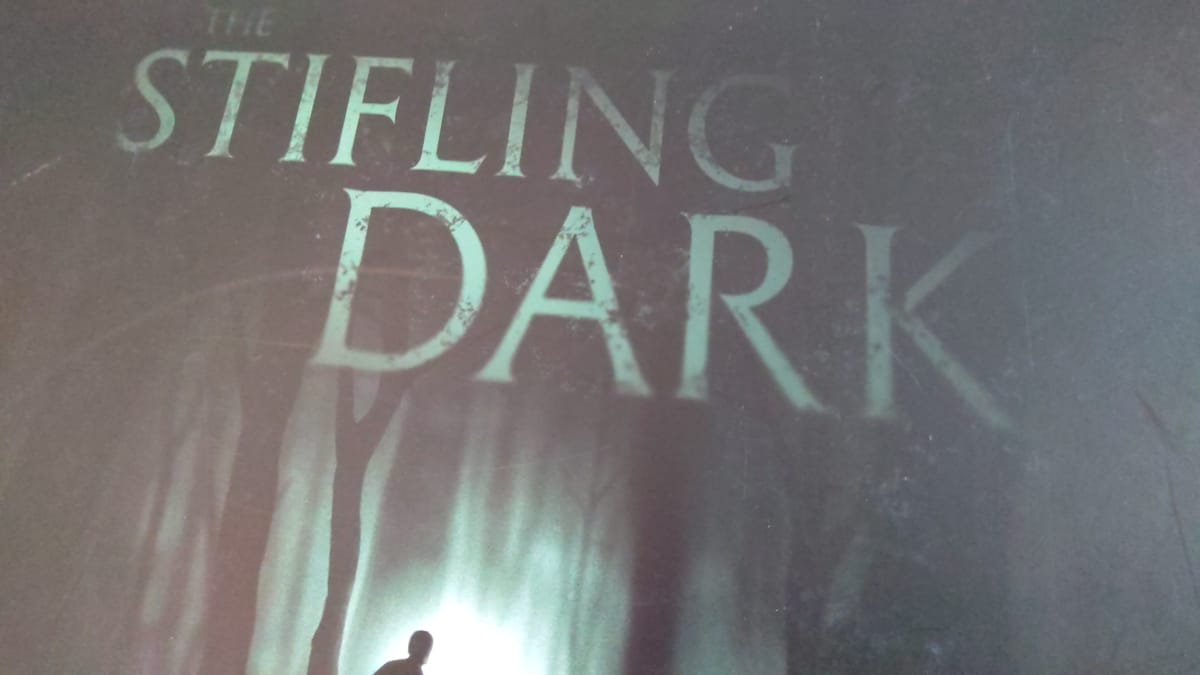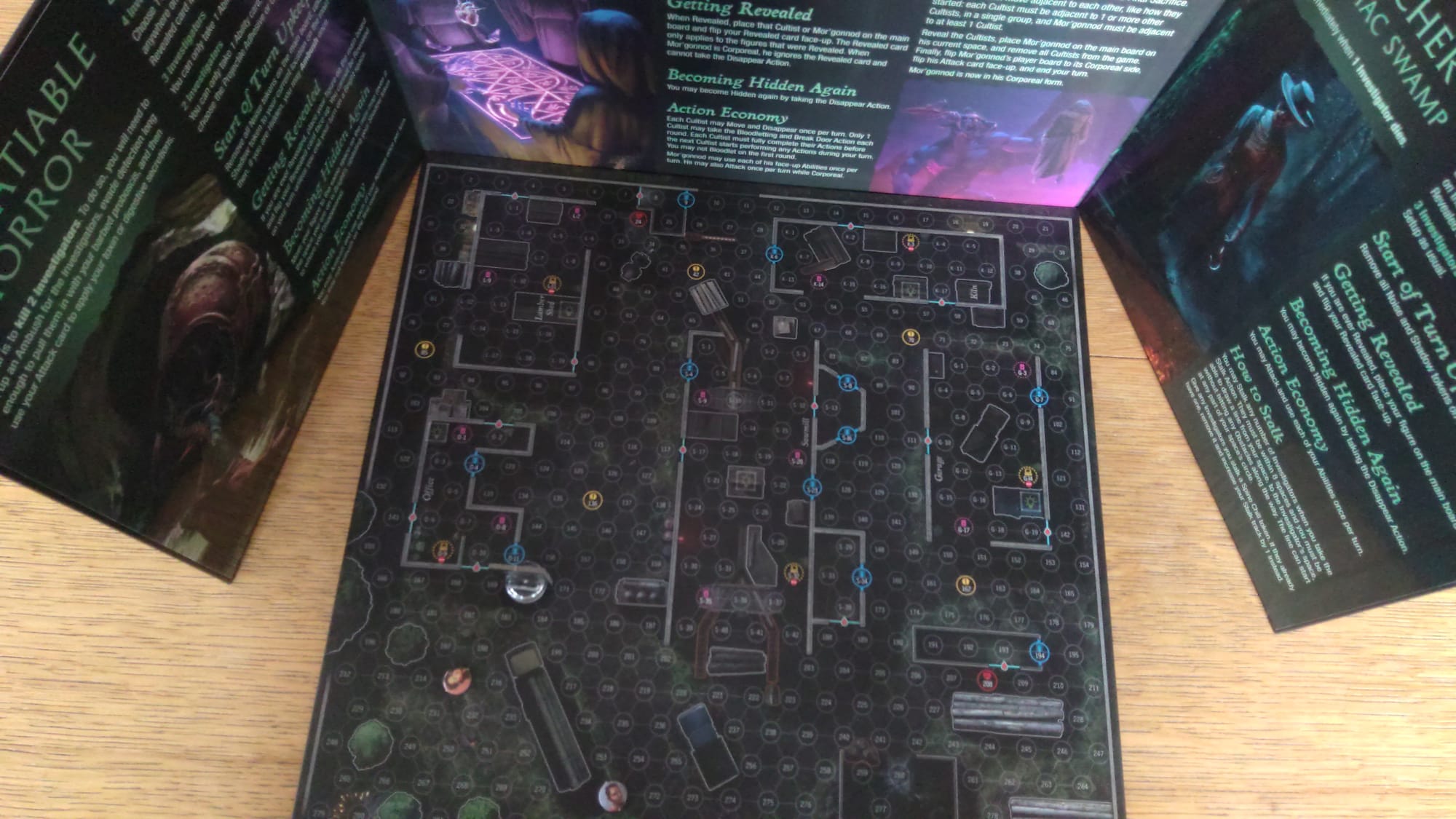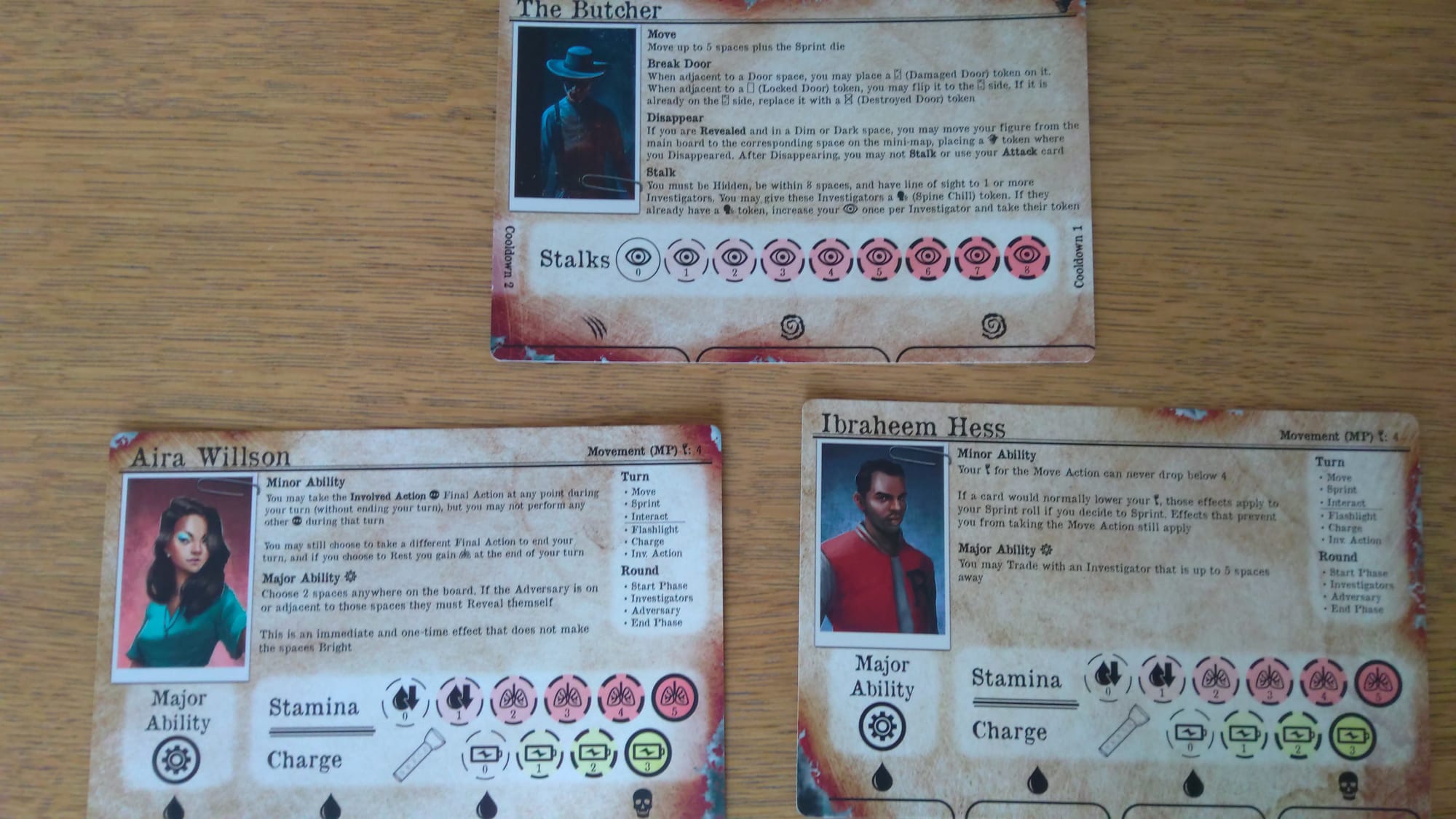
In the last decade or so, the bar for what would be considered an average board game production has skyrocketed. Gone are the days of utilitarian UI and beige euros; anyone that considers themselves a hobby gamer has a reasonable expectation that anything in front of them will be aesthetically pleasing. Stifling Dark is not such, with art and components that range from passable to actively ugly. However, it pulls the same magic trick that Caylus and Hansa perform, that get you so enthralled in the gameplay that you forget about the looks of what you're playing with.

There’s a marriage of thematic immersion and mechanic brilliance at work here, where both sides simultaneously build upon and support each other. Stifling Dark is a 1vX hidden movement game that flips the genre on its head, as the inspectors attempt to complete tasks across the map while avoiding the hidden player, who's trying to kill a certain number of them before they can escape. Not that they're completely defenseless, they can sprint, utilize the terrain to their advantage, and stun/divert the killer by dropping flashlight templates. As a result, Stifling Dark winds up feeling a lot like an analog adaptation of those countless asymmetric horror video games, only a lot more fun due to the inherent advantages of the medium: the killer is incentivized to act as a pseudo-DM and care more about making sure everyone has a good time than ensuring a win, and the survivors are less likely to dunk on them and make them miserable for their effort. Most importantly, Stifling Dark provides everyone with a toolset that allows them to adapt the game to the group with a host of levers.

Communal map selection is the first and most obvious way for the players to choose what type of game they want to play, with the lumber mill providing a straightforward canvas to mess with the game's systems upon, and the carnival adding rides and sideshows that players are forced to interact with in interesting and thematic ways, upping the complexity of a session somewhat. Adversary character choice, on the other hand, at least appears to be entirely in the hands of one player. While letting player count and desired vibe influence your choice may not seem like you're the one pulling the strings, having the final say over if the group is playing Halloween, Lake Placid, or Children of the Corn with the option to tweak for personal playstyle is right up my alley. Inspector choice, on the other hand, is more of a personal choice—what do you want to be good at, what role do you want to fill? Sure, ideally the team is covering getting stuff done without too much overlap, but it's not the worst thing if y'all wind up with two of the “I don't die as easy” guys, for example. But as a group, the Investigators do have a huge switch to collectively flip by deciding their win con, either what I consider the standard objective provided by the map or the strange mix of prestige and desperation that's usually tougher and provided by the adversary. As much as I do generally appreciate the extra way for players to decide the shape of the game, it does open the door for stuff like when Dan played killer at a con for a group who had just picked up a copy, who decided to drag the game out despite having the map win locked up to go for the super duper win, which obviously sucked for him. Group of douches aside, (and Gaming Trend discourages being a bunch of douches to a stranger you just met) I generally loved Stifling Dark's malleability.

As much as I like the knobs and levers provided, my favorite thing about this game is how aggressively unique it is. Yeah, in theory it's a hidden movement game, but with how quickly the Investigators progress their objectives and regenerate their resources, the adversary has to repeatedly reveal themself, to the extent that the secrecy is more of a source of tension than a drawn-out discussion of “where could they be?” so investigator turns are more tense moment-to-moment decisions than grand drawn out strategies that leave the lone other player feeling like they might've been better off taking a nap. Sure, the general production might be below average for this era, but the fact that I'm figuring out how to bring out my copy with hobby windows doors and whatnot instead should speak volumes to the quality of everything else.
The Stifling Dark
Great
You know how categorizing The Outer Wilds as an exploration game doesn't feel quite right, 'cause there's a lot more there? That's how I feel about calling Stifling Dark a hidden movement game. This one's got enough stuff under the hood that feels so unique and unto itself that I just feel the need to tell y'all to go and try it out.
Pros
- Tense and pacy
- Unique without being too hard to teach
Cons
- Uglier than Jason under the mask
- Can break if the investigator team does too well and decides to flex on the adversary, but no one's making you sit there and take it
This review is based on a copy provided by the publisher.
